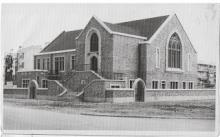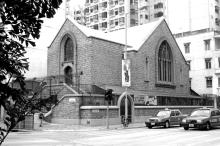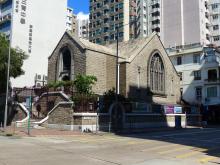Current condition
In use
Date completed
Designed by the famous Chinese architect Su Gin Djih 徐敬直.
Su Gin Djih (1906 - unknown) was one of the first generation Chinese architects who studied abroad in the early 20th century. He moved to Hong Kong after 1949 and continued his business here. Another example of his works still retained in Hong Kong is Seventh-Day Adventist Church, Kowloon Church基督復臨安息日會九 龍教會. The buildings he designed in Hong Kong were of modern style, having a simple and functional form with articulation only from the building elements such as the sun shading devices and coursed rubble wall material on the building elevations.



Comments
Kowloon Seventh-day Adventist Church
Greetings. I read with interest the referenced page where it recalls the life and time of its pastor Chung Wai Poh. It also states that, in addition to his service at the church, he started a class to teach the youth in the area. As more students wanted to attend, he provided additional classrooms.
In the summer of 1951, news of the class expansion reached our family*. As this school 三育小學 was located closer to our home, mother took me there for a tour. I always remember the moment I looked at the place while standing at its entrance on Fa Yuen Street. I started primary 2 later that year and was one of their early students. There were no more than 3 primary classes housed in a small one level bulding, each about 16 students. One day I ignored, or perhaps forgot, the teacher's instruction, and continued to run around during recess, fell and hit my face. The sign of blood was more scary than the pain. The same good pastor came out of his office to take care of me - confirmed after looking at his photos taken years later.
* The biography added that when WWII broke out, Pastor Chung moved to Wai Chow 惠卅 and next to Qujiang 曲江 when the former fell to the Japanese army. About the same time, my parents evacuated inland from Guangzhou to Qujiang 曲江 and next further north to Shaoquan, so it was likely how they first met the pastor. Maba (Mabazhen) was a little hamlet in Qujiang, and it was in a refugee camp there by the river where I was born. Of all places in this world, I think many of us would want to go back to see our birth place.
Fond memories, later the primary school site was turned into middle school. Regards, Peter